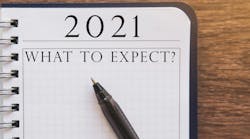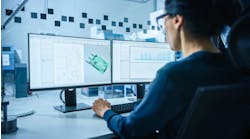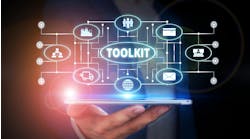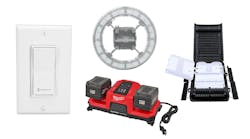With the onset of the pandemic, many facility managers find their operations significantly challenged. Whether it’s navigating challenges related to an increasingly remote workforce, changes in how and when we use commercial spaces or a greater emphasis on building health and safety, flexibility will be key to adapting to these disruptions and ever-evolving operating conditions in 2021 and beyond.
But how do we achieve this future flexibility? One potential solution is gaining traction in the lighting industry: Networked Lighting Control (NLC) systems equipped with Luminaire Level Lighting Controls (LLLC). With occupancy and daylight sensors factory-integrated into each luminaire, LLLC offers a platform for granular sensor placement, amplified by lighting’s ubiquitous and uniformly-spaced presence throughout a facility.
LLLC has been primarily seen as a tool for energy efficiency, since it compounds energy saving efforts by “layering” different control schemes, like occupancy sensing, daylight harvesting and scheduling. This potential varies broadly by facility type and hours of operation but can be significant, averaging up to 63% beyond fixture upgrade savings alone. LLLC can also automatically satisfy energy code-related occupancy and daylight sensing requirements in most cases.
However, LLLC’s array of sensors and individual luminaire programmability can also enable some powerful flexibility tools that facilities will find advantageous to productivity and operational efficiency. Business benefits vary according to the space type, function, and activity of a building, but they can prove extremely valuable, oftentimes even outweighing the benefits of potential energy savings in some facilities.
External Systems Integration
Integrating the LLLC system with other building systems such as HVAC or Building Management Systems (BMS) can allow more consistent facility monitoring, and can even improve non-lighting system efficiency by utilizing luminaire-integrated sensors. For example, HVAC systems can understand more about the occupancy of a room when luminaire-mounted sensors are feeding the BMS granular, real-time data – which means the system can potentially increase air flow when it senses that more people have entered a room. And, LLLC sensors are available that can even sense temperature and humidity to assist in this interaction. All of this is especially relevant today as the COVID-19 pandemic has created a new focus on air flow and treatment in commercial buildings.
Asset Tracking
Luminaire-mounted sensors can provide the coverage needed to accurately track equipment-mounted RFID or Bluetooth asset tags, monitoring the location of these mobile items. This can be especially useful in hospitals to quickly locate shared medical equipment such as wheelchairs, supply carts and even vital life-saving equipment. Asset tags can also collect object use data, allowing operations to maximize purchasing efficiencies.
Security
LLLC occupancy sensing can also notify security teams of space intrusion. Additionally, by integrating Fire & Life Safety Systems with the lighting system, facility managers can enable creative alarm responses. For example, “pulsing” lighting to give a strong visual cue to the egress path away from hot spots identified via LLLC thermal sensing could facilitate life-saving egress response. Recently, LLLC sensors have also been used to support COVID-19 related Contact Tracing.
Energy Monitoring & Remote Diagnostics
Sensing individual device energy usage and performance metrics can allow predictive maintenance through diagnosis and automatic email notifications of issues to facility managers. This can identify problems before they occur — a proactive, rather than reactive, approach to maintenance. Graphic dashboards can give facility managers a real-time, visual operational view of the lighting system, offering historical use data and even room level plan views of activity.
Space Utilization
Observing lighting sensor activity reports can inform facility managers of traffic congestion issues or wasted process steps and can allow retailers the ability to measure sales department visitation for more efficient space utilization planning.
Indoor Positioning & Wayfinding
Utilizing two-way communication between LLLC sensors and personal devices, large campuses such as medical centers or universities can use indoor positioning to offer wayfinding assistance to selected destinations when the occupant downloads a simple app to their personal device.
Scheduling
Scheduling room usage can avoid time wasted searching for available conference spaces, and LLLC-enabled occupancy sensing that indicates lack of activity can confirm available rooms via a graphic dashboard available with some systems.
These are just a few common examples of business benefits leveraged by those who implement LLLC systems. However, the possibilities of this technology are expansive and continue to grow as the industry innovates and introduces new use cases. Facilities that invest in LLLC today are “future-proofing” their buildings to adapt to changing operational conditions and space needs. As the pandemic has shown, flexibility in managing facilities is critical now more than ever and this need will continue to grow in 2021 and beyond.
Adams is an international lighting industry speaker and instructor. He can be reached at [email protected].



